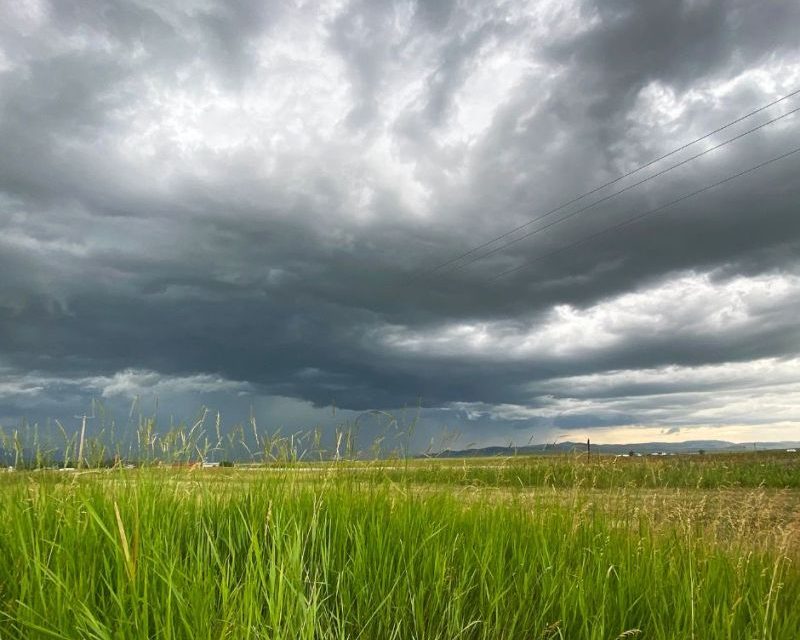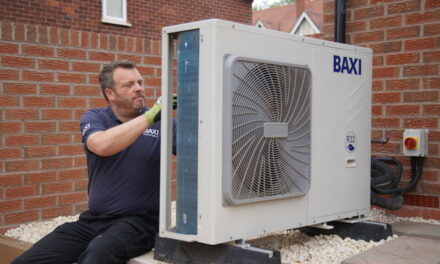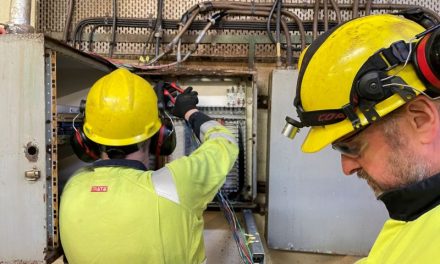The UK is renowned for its heavy rain and, amidst this, electricity networks face a constant challenge to minimise downtime and prevent outages from storm-related faults, which can be as many as 100-200 per day. Here, Dr David Clements, Data Analytics Manager at VisNet explores storm-related outages and explains how permanent monitoring equipment can detect pre-faults and their location, to assist network operators in proactive repair work.
Before we delve deeper into the data surrounding adverse weather and faults, it is crucial to understand the difference between a fault and a pre fault. A pre-fault is a short duration spike in current caused by a breakdown of insulation on the feeder, with the current then returning to a normal level. A fault, however, is a higher energy event where the fault current persists until protection operates to clear it, which results in an interruption to the customer supply. The graphs below illustrate what these events may look like.

We’re now clear on the difference between a pre-fault and a pre-fault fault, but what causes either of them? Faults can be caused by numerous things such as the insulation breakdown, third party damage and thermo-mechanical effects, along with moisture ingress – which is clearly a key risk during adverse weather.
Rainfall and precipitation in the UK, on average, can be as high as 130mm per month in the winter, and even in the warm summer months, this level only drops to between 70mm-90mm. These rates increase again in certain areas of the UK with Scotland receiving more rainfall than any other country within the UK. In addition to heavy rainfall, storms introduce more volatile and challenging weather to the electricity networks of the UK, and between September 2023 and January 2024, there were ten named storms in total. All of this contributes towards incredibly threatening conditions for electricity networks.
When we think of rainfall and storms impacting electricity networks, we may envision lightning strikes and heavy gales bringing down power lines and pylons, but on top of this, damage is also done underground. Heavy rainfall that settles in one spot will slowly filter through the ground and into the electricity lines below, which can cause faults and outages in the network and the substations that feed homes and businesses.
In one example from Storm Babet which hit the UK in October 2023, our fleet of over 19,000 pre-fault capable VisNet Hubs and Guard devices saw in excess of 10,000 pre-fault events over 24 hours, indicating widespread electrical disturbance. These events indicate damage to underground cables that will lead to outages in the future. To better visualise the surge in pre-faults, the chart below demonstrates just how severe the spike is during adverse weather.

To prevent pre-faults from becoming full faults that lead to customer outages, you must locate the pre-fault in order to perform repair or restoration work. To do this efficiently, waveform capable monitoring equipment must be installed, such as the VisNet Hub.
The VisNet Hub is an LV monitoring system that provides visibility to support a proactive network and fault management approach. Ultimately, the monitoring equipment allows substations to identify the location of pre-faults. This, coupled with the range of applications that can be added, contributes towards a proactive approach to fault management for electricity networks.
Adverse weather is an unavoidable challenge for the UK, meaning that electricity networks and lines will always be vulnerable at points. A complete monitoring system will allow you to take a proactive approach to pre-faults which will reduce the number of outages to customers and increase the quality of service provided. Of course, outages result in costly penalties and complaints, and repair work on full faults are more expensive than proactive work on a pre-fault.
For more information on VisNet and the VisNet Hub, visit: https://visnet.tech/






